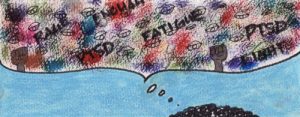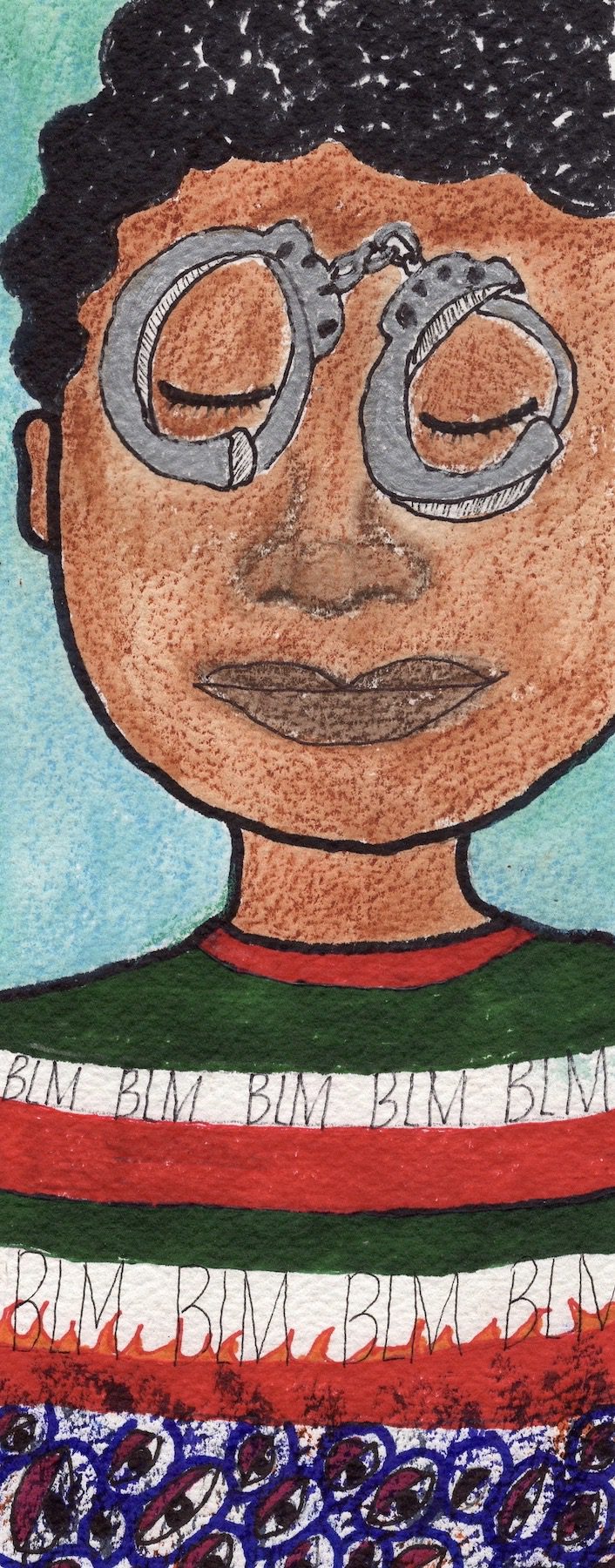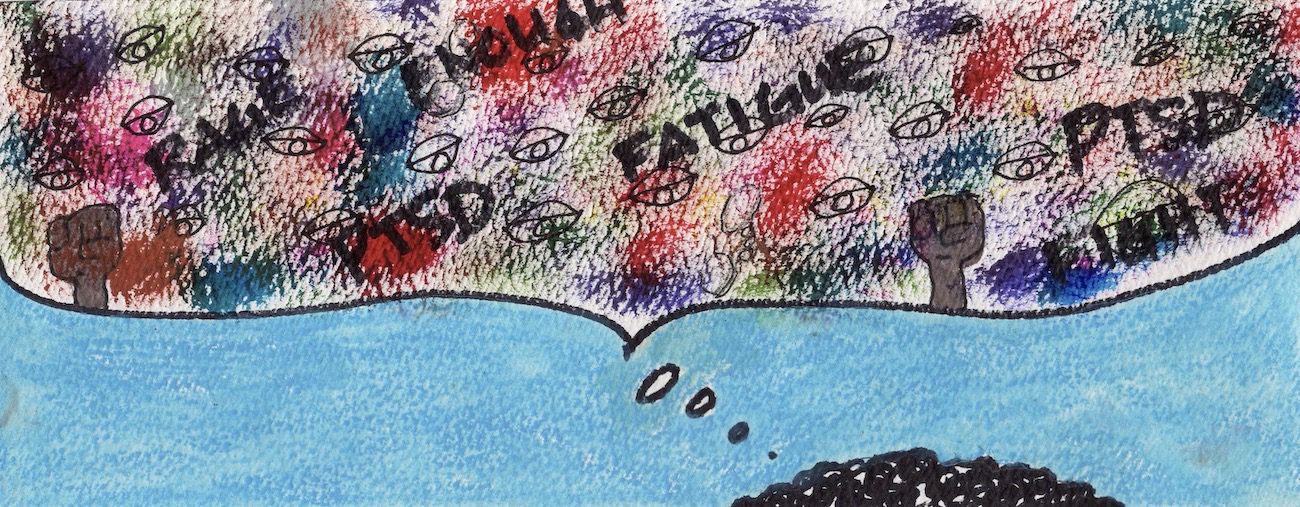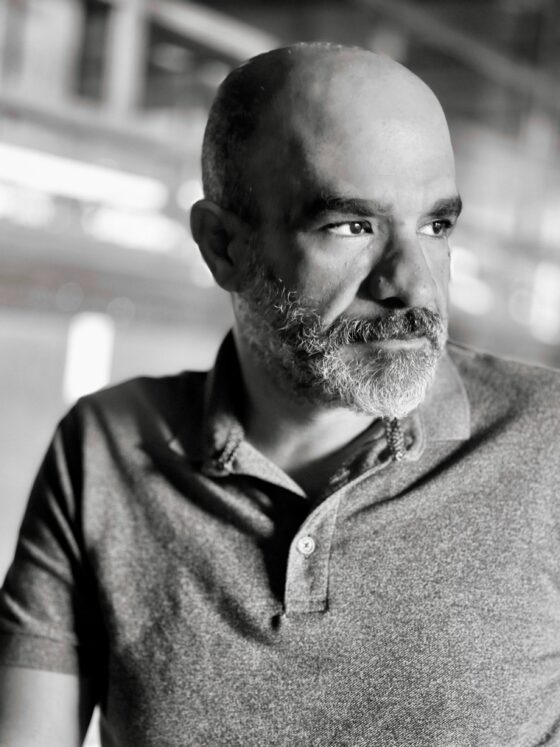
In the years before Netflix, my husband and I used to take our son and daughter to Blockbuster on Friday nights to rent a movie for the weekend. It became our family ritual, especially in the winter months when the Michigan evenings fell early. We’d drive to suburban Detroit (there were no Blockbusters in the city in those days), grab a movie, then go out for dinner.
Increasingly, what started out as a pit stop to launch the weekend became a tug of war at the checkout. Instead of heading for the rows of movies, our elementary schoolers swarmed the junk aisle, begging for everything except movies: Disney tie-in toys, candy, magazines. One evening, when our son Jay was about ten, he was adamant about getting an action figure. When we told him to put it back and get a movie, he tried to bargain for a toy instead of a movie. We held the line. He glumly picked out a movie and we headed for the car. As soon as we got outside, he started to giggle, and pulled out the action figure from beneath his coat.
There’s a theory about Black parenting. They say that we punish our children harder, louder, more physically than non-Black parents as a remnant of slavery. It’s like broken windows parenting: you come down hard on the small infractions to prevent bigger infractions that could become a matter of life or death. I don’t know how true that is, but we made a giant mountain out of a molehill that evening. We yelled at Jay for shoplifting and fumed that he had purposely disobeyed us. It was time for a lesson.
We marched him back into the store to return the toy and to apologize to the owner for what he’d done. He was big for his age (and too big for this kind of behavior), but he started to cry. Ignoring his tears, we asked for the manager, a middle-aged white man. In between his teary gulps, Jay confessed to his crime.
“We’re so sorry,” I said, heaping on our apologies. “This will definitely never happen again.”
The manager glared at us. “I’m calling the police,” he said, picking up the phone.
“Wait, what?” my husband stepped toward him. “What are you doing?”
“I’m calling the police. He was shoplifting.”
We hustled out of the store and piled into the car, not hanging around to see if the man actually called the police. My husband and I kept checking the rearview mirror, expecting the wail of a siren any moment. We tried to console our traumatized child. In the process of teaching him about justice, we’d almost gotten him arrested.
Later that year, on October 31, 1997, police pulled up to a Pontiac, Michigan elementary school to arrest Nathaniel Abraham, a Black child and eleven-year-old murder suspect. They found Nate in his special education classroom, where he was wearing clown face paint in preparation for a Halloween party.
Two days earlier, the fifth grader had stood in a field near his home. It was about ten at night, too late for a child his age to be playing outside alone, much less with a .22 caliber rifle. But Nate’s mother was working the graveyard shift at a lab and had left him in the care of his older siblings. Nate would later say that he was just shooting at trees when a stray bullet struck nineteen-year-old Ronnie Greene. Thanks to a Michigan law that had only been passed months earlier, Nate became the youngest child in American history to be charged as an adult for murder.
At the time, I was the editor of an alternative newsweekly in Detroit. We rarely covered daily news, but I couldn’t stop obsessing about Nate’s story. Detroit, like its sister city Pontiac where Nate lived, was still reeling from the rampant urban violence fueled by the crack epidemic of the 1980s and early ‘90s. It was the era of mandatory sentencing and three strikes and you’re out. Prisons were so overcrowded that “punk prisons” were built especially for the marauding wave of Black, young “superpredators” that society feared was in the offing. It was the height of criminalization of the Black body, especially Black males—even those who still went to Halloween parties at school. A Black boy, no matter how young, was not a child. He was a future criminal.
Jay’s and Nate’s life circumstances could not have been more different. When I went to work at the paper every day, he was in good hands, unlike Nate, a kid diagnosed as emotionally disabled who was left in the care of siblings. My child lived in one of Detroit’s old-line, well-heeled neighborhoods. Nathaniel’s neighborhood was neglected, riddled with unemployment, and overrun by gangs. Jay had a learning disability that was addressed by all the resources of his parents and private schools. Nate got no counseling for his increasingly disturbing behavior as he grew older. But for a Black mother, these are distinctions without a difference. Only the grace of God kept my son from being the one handcuffed in the back of a police cruiser, facing life in prison without the possibility of parole.
I decided to cover Nate’s story. I went to court and met his family—his hard-working mother, his loving sister, his adorable baby brother. I met the victim’s family, too, including Ronnie’s sister who had already lost a child. My heart broke as I learned how the schools, the social safety net, the police, and even the neighbors had failed Nate. The piece I wrote was about the murder, but also about the criminalization of Black men, the rash of state laws allowing very young children to be sentenced as adults for serious crimes, the failure of schools, police, and communities to protect Black children.
When it came time to find an illustration for my cover story, I knew exactly the image I wanted: a faceless, Black child with his wrists in cuffs, clinging to a teddy bear. I also knew that I could never ask any other Black mother to offer her son as a model. My only option was as impossible as it was obvious: I had to use Jay.
I struggled with the decision because I knew I might be doing violence to my child’s innocence and gentle nature. Whenever I refused to open the door for the Jehovah’s Witnesses on Saturday mornings, telling everyone to scamper away from the door and keep quiet, Jay would get upset. He was about eight when he looked at me and said, “But it’s a person out there.”
It killed me to imagine putting him in handcuffs. But as a journalist, I knew how important the story was to the national conversation about the criminalization of Black men. I rationalized that Jay was young and unaware of the larger issues. His face would not be shown in the photo. We’d take the photo and forget it ever happened.
The day of the photo shoot, Jay was excited. He had heard me talk about Nate and knew what the story was about. I think for him, it was just another crime story, like all the others he’d seen on TV. The images of Black men were not only of the lawyers and doctors that he’d be raised around, but the hypermasculine, aggressive, criminal images that pervaded rap music and pop culture. He was intrigued by the twisted glamor of being a thug.
But when the cuffs clinked around his wrist, we both were jolted into reality. My stomach jittered and tears welled. It felt like I was seeing the future, his inevitable run-in with the police, that rite of passage reserved for so many Black men without regard to their innocence.
He tried to cooperate, but soon it was clear that the cuffs didn’t feel like he’d expected. The cool steel began to cut against his dark skin as he stood in the studio spotlight.
After a few shots, he said, “I want these off.”
“That’s enough,” I said, my heart pounding. “Take them off!”
The photographer uncuffed him, and then played with Jay to help diffuse the tension that suddenly choked the room. The studio was filled with art and curiosities; the photographer let Jay play with things and ask questions. The moment blew over, but I was having a hard time settling down. When we got ready to leave, I thanked the photographer.
He nodded, “Are you okay?”
I shook my head; I was far from it. I couldn’t help but think that if Jay was ever really arrested, he would remember his mother was the first person to put him in cuffs.
I went to the University of Virginia’s law school, in Charlottesville at the foot of the Blue Ridge Mountains. On the main campus, some of the buildings used to be slave quarters. I remember gazing around the first day of law school counting how many other Blacks had been admitted. I think it was about twenty-five out of three hundred.
Four of us were in the same criminal procedure class. In the first week, the middle-aged, white professor started his lecture with a personal question: “How many of you have ever been stopped for no reason by the police?”
After no one raised their hands, the professor insisted. “I’m not talking about being arrested or committing crimes,” he pushed. “I mean, how many of you were minding your business and abiding by the law when you were stopped unnecessarily by the police?”
There was still some hesitancy, but finally three men raised their hands. All three were Black.
I hated the professor for singling them out like that, for subjecting them to the white gaze. And yet, the effect was jaw-dropping. We were in a top-rated law school where no one got in without passing certain academic and economic hurdles, and yet, here were three people that the police presumed were criminals. The whole room gasped. The professor asked them each to tell their stories. They were stories about unprovoked traffic stops, accusations at the mall, presumptions of gang membership as they walked to a city eatery. All instances that could have resulted in any one of those men never making it to law school, or even through that encounter alive.
“That, my friends,” said the professor, “is why we study criminal procedure.”
The year 2020 has left us breathless. We watched in horror as COVID-19 disproportionately ravaged the Black community, turning even our lungs against us. It was a perfect storm: stuck in low-wage, public-facing jobs, African Americans were suddenly deemed essential. We got up early to clean the toilets, stock the shelves, drive the buses, serve the Happy Meals. Unable to hunker down at home, we died for minimum wage. Detroit became an epicenter of the virus, and I reeled day after day, as I learned that another friend, acquaintance, public figure, senior citizen had been suffocated by the disease.
By then, I was caregiving for my elderly parents in the Virginia Beach area. After hard luck in Detroit, Jay had joined me in Virginia that January to start a new life. He’d just earned his phlebotomy certification when the pandemic hit. We ended up quarantining together along with my parents. My thirty-two-year-old firstborn was under my roof again.
Late on Memorial Day in 2020, Minneapolis police officer Derek Chauvin used his knee to choke the life out of a forty-six-year-old African American father who had gone out to buy cigarettes. It took nine months for George Floyd’s mother to bring him into the world, and we all watched as it took nine minutes for the racist, sadistic police officer to take him out. After submitting, pleading, moaning, and warning that he couldn’t breathe, Floyd did the only thing a hopeless soul can do—he called for his mother who had passed away two years before. The officer kept his knee on George Floyd’s neck for three minutes after they could find no pulse. An independent autopsy would later confirm that he died of mechanical asphyxia.
The year was not half over, and the Black community was once again out of breath.
In the days following the murder, Jay and I struggled to keep each other’s spirits aloft as we watched America’s cities erupt in peaceful protests and violent rampaging. We were helpless to engage in the big questions, and we were helpless to engage in the smaller ones, too. Like why Jay will always be my gentle, precious child, but to the world, he is an animal. I kept hearing Floyd call for his mother in his dying moments and thinking of the calls we’d received from Jay, the childlike tremor in his young man’s voice, “Mom, come get me.”
He has had many encounters with the police; some I know about, some I don’t. Once, when he was working in a suburban neighborhood as a door-to-door solicitor for a home repair company, someone called the cops on him. He’d been arrested for a blown headlight. Once, when he was stopped for expired tags, the cops called in reinforcements from another jurisdiction. He has spent hours in jail for doing nothing wrong while he waited for us to rescue him.
I couldn’t know exactly what was going through Jay’s mind as the George Floyd murder unfolded, but I noticed he was uncharacteristically solemn. As the days passed, he stopped smiling. He withdrew from me and spent hours on the phone with his friends in Detroit.
On the Saturday after the murder, we had to get away despite the pandemic. I thought it would be good to take a long drive to the beach. We hopped in the car, so happy for the fresh air. But as the landscape got more rural, he grew uncomfortable. He kept commenting about the woods. We passed a road named “West Neck,” and he read out loud, “Red Neck.”
When we approached a traffic jam on a two-lane road, I strained to see what was going on, while it seemed that he was trying to make his muscular body small. When we neared the reason for the snarl, we were both relieved that there were no police—only drivers slowing down to avoid a giant turtle ambling across the road.
We stopped at a seafood diner to eat, sitting outside, away from the entirely white (and friendly) staff and clientele. I thought it would be a treat, but I immediately saw my mistake. He was hyperaware the whole time, his ears trained on the conversations around us, uncomfortable with the distance to the bathroom, constantly checking his surroundings. It was like he was holding his breath.
I kept telling him it was okay. He tried to trust me. He wanted to trust me. But he already knew what all Black men know: when they are being hunted, their mothers can’t save them.
“What does it feel like to be arrested?” I asked Jay a few nights after our drive.
“It’s the scariest thing that can ever happen to you,” he said. “When they tell you to get out of your car, they search your car, they put you in the back of the cruiser, all you can think is what’s going to happen now? I was just on my way to work or to the store and now they’re going to throw me in jail with a murderer. It’s pure helplessness.”
“When they say, ‘Put your hands behind your back,’ that’s when the shit hits the fan,” he continued. “Because I’m Black, they see me as dangerous. They think I have something hidden. They call five cops for backup. It feels like they are ready to take you out.”
He told me about the humiliation of being stopped for a minor traffic infraction and being commanded out of the car while passersby gawked.
“People driving by look and see me being arrested and they must think, Wow, he must have robbed someone,” he said. “When I see those flashing lights, I become two people. At first I think, What did I do wrong? What’s about to happen to me? But then I think, Fuck you.”
It was the first time I’d seen his rage.
“I have battled with myself,” he continued. “I say that I hate all cops, but how can that be true? I know cops who I deeply respect. But over the years…”
“Do you ever wonder if you really did do something wrong? Something a long time ago that you forgot about?”
“When you’re in the back of the cruiser and they’re talking in all this code and punching stuff in a computer, you wonder what they found out. You really start trying to remember what you did to deserve the way you’re being treated.”
“What does it feel like to wear handcuffs?”
“It hurts your wrists; they are very tight. And your shoulders ache. You’re off balance with your hands tied like that. You can’t maneuver.”
I waited, holding my breath. I was devastated that, as a mother, I hadn’t been able save him from any of that. Sad that people had treated my baby that way. Sad that we had never talked about it.
He gave a wry laugh. “I can’t even watch those shows like Cops anymore,” he said. “It’s too real. I have PTSD.”
And then he looked at me, his child eyes shimmering from his grown man’s face. “Hey, Ma? Do you remember when you put those handcuffs on me?”
***
Rumpus original art by Leesa Travis.







